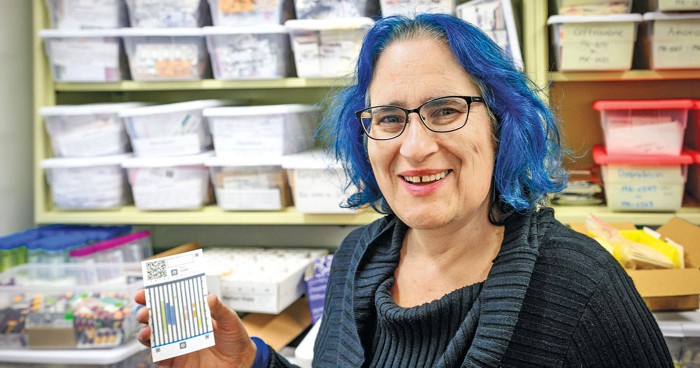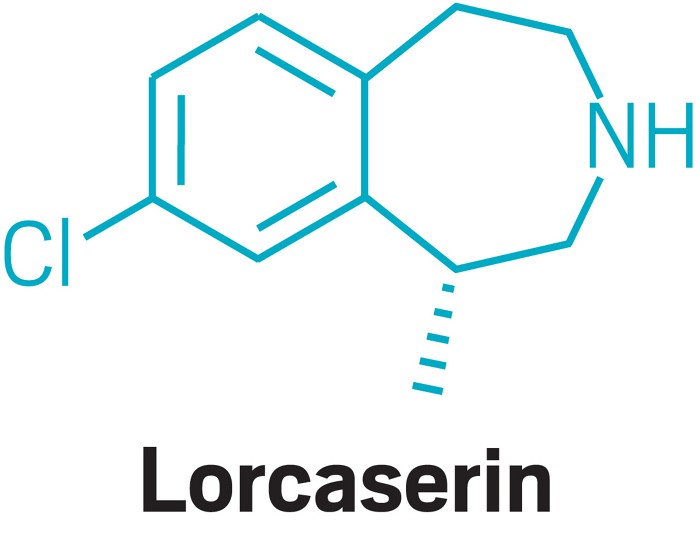Advertisement
Grab your lab coat. Let's get started
Welcome!
Welcome!
Create an account below to get 6 C&EN articles per month, receive newsletters and more - all free.
It seems this is your first time logging in online. Please enter the following information to continue.
As an ACS member you automatically get access to this site. All we need is few more details to create your reading experience.
Not you? Sign in with a different account.
Not you? Sign in with a different account.
ERROR 1
ERROR 1
ERROR 2
ERROR 2
ERROR 2
ERROR 2
ERROR 2
Password and Confirm password must match.
If you have an ACS member number, please enter it here so we can link this account to your membership. (optional)
ERROR 2
ACS values your privacy. By submitting your information, you are gaining access to C&EN and subscribing to our weekly newsletter. We use the information you provide to make your reading experience better, and we will never sell your data to third party members.
Drug Safety
Opinion
Illicit fentanyl: Still the perfect storm in science
Scientists can help reduce deaths by educating people about the drug’s extreme dangers
by Donna Nelson, special to C&EN
August 13, 2024
| A version of this story appeared in
Volume 102, Issue 25

In the past 3 years, illicit fentanyl killed nearly 250,000 people in the US, according to the US Centers for Disease Control and Prevention (CDC). The estimated number of overdose deaths in the US caused by illegal supplies of the drug soared from about 3,000 in 2013 to almost 75,000 in 2023. In that year, US Customs and Border Protection (CBP) seized—from would-be smugglers—more than 12,000 kg of fentanyl, enough of the drug to kill everyone in the US 18 times over.
Illicit fentanyl poisoning

Fentanyl is a synthetic opioid, 50–100 times as powerful as morphine. Doctors may prescribe it to treat people with severe pain—for example, after surgery. But because fentanyl is inexpensive and very little is needed to make people high, drug dealers often add it to cocaine and other illicit drugs, causing many people to take fentanyl unknowingly.
The devastating effects of illicitly made fentanyl make headlines repeatedly. The media is filled with sad reports of entertainers, athletes, musicians, and others who died of drug poisoning, and fentanyl is often identified as the culprit. CDC data show that the highest number of overdoses is among people in their 20s and 30s.
Many people are aware that there is a problem with illegally made fentanyl in the US, but they are unaware of the magnitude of the crisis. The problem is enormous, and anyone reading this column can help. The first step is educating people.
Illicit fentanyl in the US
The flow of illicit fentanyl into the US is complex and depends on the drug slipping past the CBP. Demand is determined by people buying the drug.
Although border patrol agents are intercepting record quantities of fentanyl at US borders, people selling drugs have little trouble shipping fentanyl precursors across international borders. As described recently by a team of reporters working with Reuters, for $3,600, Chinese suppliers shipped enough precursors (a piperidone) and equipment to locations in Mexico and the US for a nonchemist to make $3 million worth of fentanyl. The authors note, “Such deals are astonishingly easy—and reveal how drug traffickers are eluding efforts to halt the deadly trade behind the fentanyl crisis.”
Demand for illicit fentanyl comes from people purchasing or seeking to purchase fentanyl from nonregulated sources. Buyers are diverse—they may be young or old, living on the street or living with family, living with a substance use disorder or trying fentanyl for the first time. A uniform solution is likely impossible with such wide-ranging demographics.
What can you do?
Each person and organization can affect people in their circle of influence. Help spread the word today. Educate people about the problem. Consider adding just a few sentences to a conference presentation—a type of public service announcement—teaching and cautioning people about the dangers of fentanyl and the magnitude of the crisis. Inform listeners that easy-to-use test strips that can detect fentanyl are available and inexpensive. In many states, the test strips are free. The same type of message can be added to a poster presentation, a lecture delivered to students, and a seminar presented to students and faculty.
Because the risks are highest among young people, I set aside time—about twice per semester—in my organic chemistry classes at the University of Oklahoma to discuss the dangers of fentanyl. I warn my students to stay away from street drugs because they are not regulated and no one knows what is in them. I tell them that taking street drugs is like playing Russian roulette.
Many students have emailed me to express their thanks, saying that they had lost a friend or family member to fentanyl and that my warning message was the only one they had received. They said it is important to hear this message and that it would help them avoid street drugs.
In addition to educating people about the dangers of fentanyl, we should use our skills as scientists to work on long-term goals. These include developing antidotes, vaccinations, and other treatments that are effective, accessible, and inexpensive. We should focus on deciphering mechanisms of drug addiction. And we should work on developing detection methods based on easy-to-use and quickly deployable tools that can check for smuggled drugs.
Individuals don’t have to wait for large organizations to take action. We can show a safe pathway today, especially to students and other young people.

Donna Nelson is a chemistry professor at the University of Oklahoma and was the American Chemical Society president in 2016. (ACS publishes C&EN but is not involved in editorial decisions.)
Recovery from addiction is possible. For help, please call the free and confidential treatment referral hotline 1-800-662-HELP, or visit findtreatment.gov.
Do you have a story you want to share with the chemistry community? Send a submission of about 800 words to cenopinion@acs.org.





Join the conversation
Contact the reporter
Submit a Letter to the Editor for publication
Engage with us on Twitter